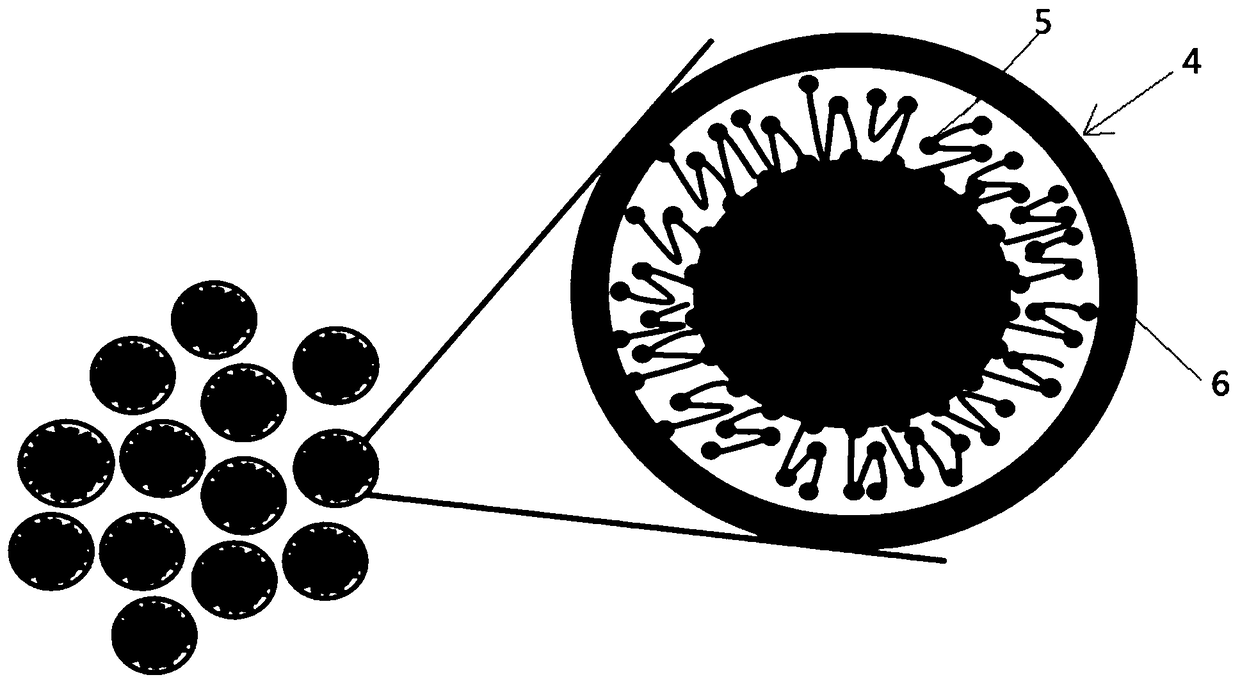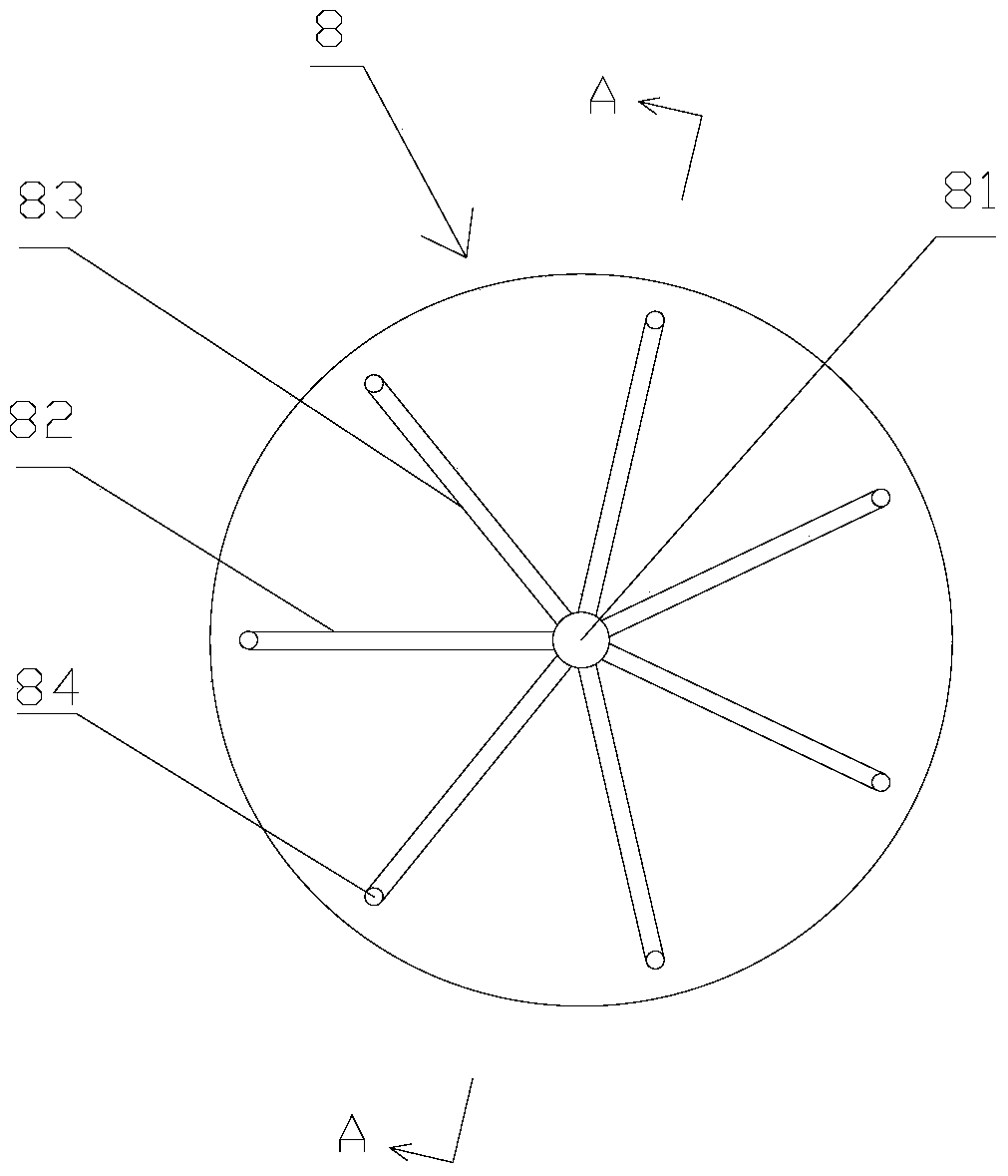Fluorescent nanoprobe and its preparation method and method for synchronous detection of multiple hazard factors in food
A fluorescent nanoprobe and synchronous detection technology, which is applied in the field of fluorescent nanoprobe and synchronous detection of various hazard factors in food, can solve the problems of low detection integration, inability to achieve synchronous detection of various hazard factors, weak optical signal, etc. , to achieve the effect of strong fluorescent signal
- Summary
- Abstract
- Description
- Claims
- Application Information
AI Technical Summary
Problems solved by technology
Method used
Image
Examples
Embodiment 1
[0057] This example gives the preparation method of the fluorescent nanoprobe.
[0058] Specifically: 1. Preparation of chelate precursor
[0059] Solution A: 2.0 mg BBCAP or BHHCT or PTTA was dissolved in 20 μL of 0.05M carbonate buffer (pH 9.5). Solution B: 6.4 mg EDC and 2.0 mg NHS were dissolved in 80 μL absolute ethanol. A and B were mixed and stirred for 20 minutes, 1.5 μLAPTMS was added, and stirred for 2 hours in the dark. Then, add 200 μL of 0.01M EuCl 3 and TbCl 3 The mixture was stirred in the dark for 2 hours to obtain a large number of amino groups and different proportions of Eu 3+ and Tb 3+ Chelates are used as precursors for the synthesis of fluorescent probes with different emission wavelengths.
[0060] 2. Preparation of fluorescent nanoprobes
[0061] A) Synthesis of TEOS nano-cores of fluorescent nanoprobes: 100 μL of the above precursor and 300 μL of ultrapure water were added to 10 mL of reversed-phase micellar system formed by nonionic surfactant ...
Embodiment 2
[0067] This example gives the preparation method of the fluorescent nanoprobe.
[0068] Specifically: 1. Preparation of chelate precursor
[0069] Solution A: 10 mg BBCAP or BHHCT or PTTA was dissolved in 20 μL of 0.05M carbonate buffer (pH 9.5). Solution B: 6.4 mg EDC and 2.0 mg NHS were dissolved in 80 μL absolute ethanol. A and B were mixed and stirred for 20 minutes, 1.5 μLAPTMS was added, and stirred for 2 hours in the dark. Then, add 200 μL of 0.01M EuCl3 and TbCl3 mixture, and stir for 2 hours in the dark to obtain Eu with a large number of amino groups and chelating different proportions. 3+ and Tb 3+ Chelates are used as precursors for the synthesis of fluorescent probes with different emission wavelengths.
[0070] 2. Preparation of fluorescent nanoprobes
[0071] A) Synthesis of TEOS nano-cores of fluorescent nanoprobes: 100 μL of the above precursor and 300 μL of ultrapure water were added to 10 mL of reversed-phase micellar system formed by nonionic surfactan...
Embodiment 3
[0076] A) Synthesis of the TEOS nano-core of the fluorescent nanoprobe: Take 100 μL of the precursor described in Example 1 or Example 2 and 300 μL of ultrapure water and add it to 10 mL of reversed-phase gel formed by the nonionic surfactant TritonX-100 The gelation reaction was carried out in the beam system. The reverse-phase micelle system is mixed according to the volume ratio of TritonX-100, n-hexanol, and cyclohexane in a ratio of 1:1:3, and the reverse-phase micelles are prepared evenly by rapid stirring. Add 100 μL TEOS to the above system, increase the stirring speed, and promote TEOS to enter the “nano pool” in the reversed micelles, then add 50 μL NH 4 OH initiates the hydrolysis reaction. React at room temperature for 24 hours to fully carry out the hydrolysis and condensation reactions. Disperse the collected product in an equal volume of acetone, oscillate ultrasonically for 5 minutes in an ice-water bath, and precipitate by high-speed centrifugation. Disperse ...
PUM
 Login to View More
Login to View More Abstract
Description
Claims
Application Information
 Login to View More
Login to View More - R&D
- Intellectual Property
- Life Sciences
- Materials
- Tech Scout
- Unparalleled Data Quality
- Higher Quality Content
- 60% Fewer Hallucinations
Browse by: Latest US Patents, China's latest patents, Technical Efficacy Thesaurus, Application Domain, Technology Topic, Popular Technical Reports.
© 2025 PatSnap. All rights reserved.Legal|Privacy policy|Modern Slavery Act Transparency Statement|Sitemap|About US| Contact US: help@patsnap.com



